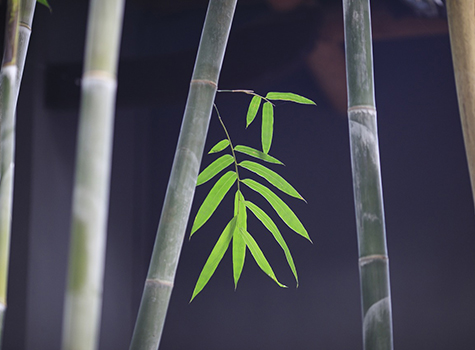It has been over a year since we have been dealing with the challenges of the pandemic and its physical and mental impact on our lives. By shutting down everything around us, it shut down our senses, positive interactions, ability to communicate and share our emotions, just to name a few. That is why I decided to go ahead with the 18th Anniversary of Dances of India as a virtual celebration on April 10, 2021. This show not only energized 2000 plus people who watched us but also my dancers and musicians. During these difficult times, I hope we will take a moment to reflect on the positive changes we want to make in our lives and to help others in need.
 I usually have a very busy schedule between family, job, dance classes, arangetrams (dance graduations), serving on the boards, community work, regular cooking, cleaning and so on. Many of you probably can relate to this schedule issue. As most of you know, when we have negative stress, or when we sit in one place for extended periods of time, whether it is at work, at home or in a meeting, we all experience the same side effects such as tight shoulders, stiff neck, headaches, fatigue, and tight back.
I usually have a very busy schedule between family, job, dance classes, arangetrams (dance graduations), serving on the boards, community work, regular cooking, cleaning and so on. Many of you probably can relate to this schedule issue. As most of you know, when we have negative stress, or when we sit in one place for extended periods of time, whether it is at work, at home or in a meeting, we all experience the same side effects such as tight shoulders, stiff neck, headaches, fatigue, and tight back.
Without yoga I would not be able to maintain my sanity and good health. I taught Yoga for several years and enjoyed every bit of it. Due to my busy lifestyle, I had to let go of teaching yoga. However, I still practice yoga when my body and mind call for it. This is a treasure that you can own for life and utilize as needed. This inspired me to write about the philosophical and religious similarities of Yoga and dance and its interdependence.
I read that Patanjali’s Yoga Sutra was inspired by an encounter with Lord Nataraja. If that is true, I can easily see the connection. Lord Shiva is considered the Adi Yogi that is the father and founder of Yoga. He is the foremost among the yogis and the first teacher of the science of yoga. Lord Shiva is also the founder or king of Dances. Therefore, the sources of these two artforms intertwine and influence each other.
Yoga means Union. Yoga and dance both begin with union of the body and mind. Both are approached in sequence through logical steps. Both are universal sciences, suited to all students who seek self realization.
We begin dance with Namaste (Salutation) just like (Surya Namaskar) sun salutations in Yoga. Using the Anjali or prayer hand gesture, we touch our forehead which represents the Ajna Chakra in Yoga. It is the focal point of concentration during meditation and dance practices. And then we bring our hands down to our chest which represents Anahata Chakra, means “unstruck” or “unbeaten”. Even the hand gesture (mudra) for meditation is Arala in both Yoga and dance. When I was teaching Yoga, I taught these dance hand gestures (Hasthas) to people suffering with arthritis. I also taught the Vrikshasana, the tree pose (Standing on one foot), among others, with dance movements to find both inner and outer balance. Many of the advanced poses in dance require flexibility of body and a systematic way to control the body movements. Out of 108 poses (Karanas), very few can be performed without training in Yoga for flexibility.
Even the word Hatha Yoga would mean the balance of Ha (Sun) and Tha (Moon) that are part of our dance ornaments that we place as part of our head dress. Dancers need to balance these two forms representing masculine and feminine energies. We need to have the strength in our footsteps while depicting the graceful movements with our hands.
Just like Yoga, dance is now being used as a therapeutic tool for children with disabilities. I taught some movements to seniors to help balance themselves and prevent falls which is the most dangerous downfall for many. Many specialized therapists, through dance they are providing the structure for developing body sense and to learn to express the nine emotions ( Nava Rasas) such as disgust, anger, wonder, fear, valor, love, compassion, laughter, and peace. Every child and adult responds to music and dance naturally. This method and approach are beneficial in raising the interest level for participation.
I know personally that dancing has influenced all aspects of my life. B.K.S. Iyengar, the famous yoga teacher has once said that “the body is my temple and asanas are my prayers”. Very true! I can easily say the same about dance, “the body is my temple and dance is my prayer”. This meditation in motion is a gift given to our culture and many other cultures around the world. Neither the yogi nor the dancer is distracted by the world around them. Both have the power of quieting the turmoil of chitta and bringing us closer to moksha (salvation).
———-
For questions or comments contact Maha via e-mail at: [email protected]
Posted: Monday, May 3, 2021



